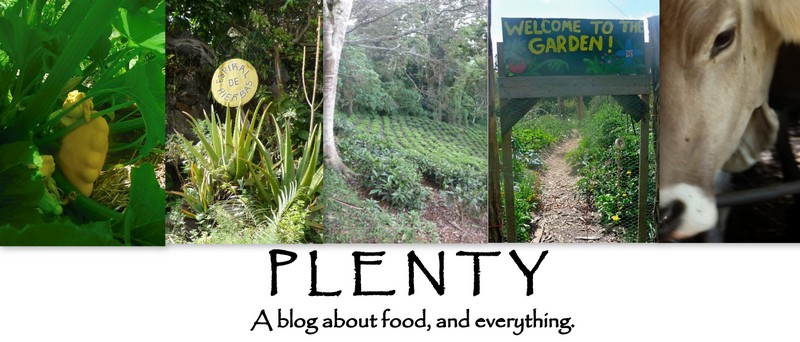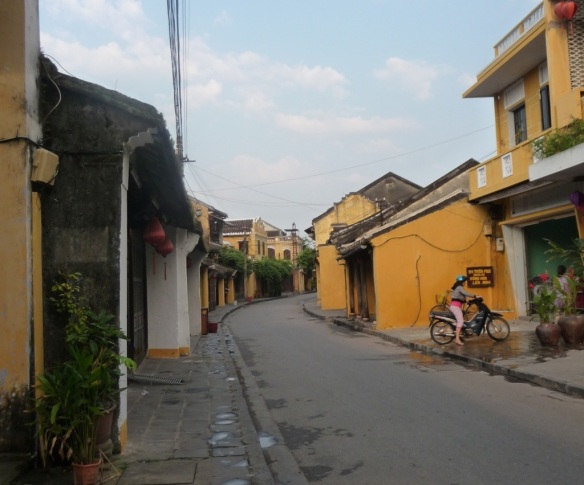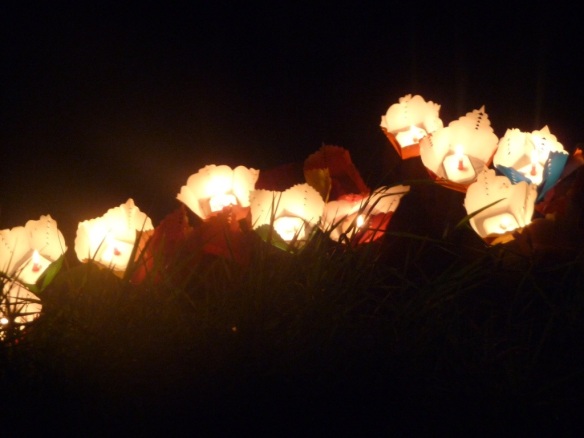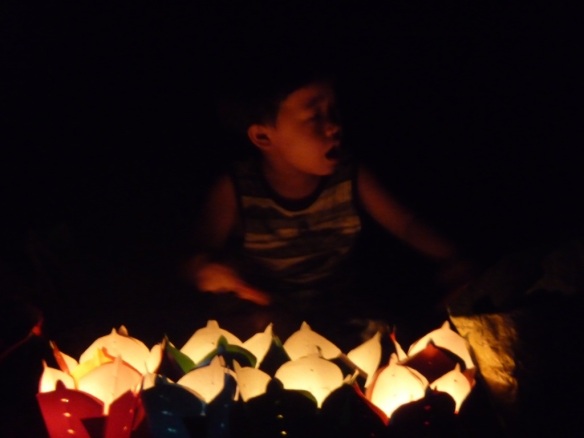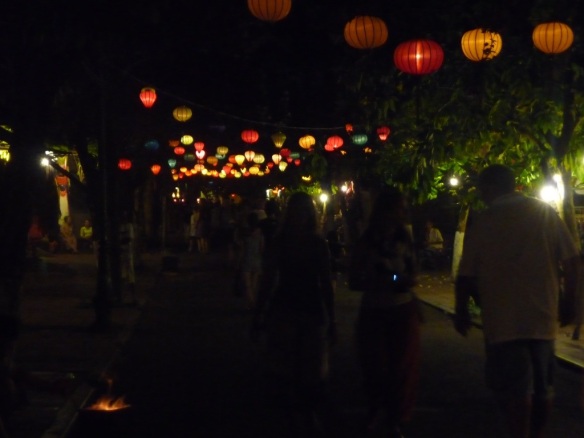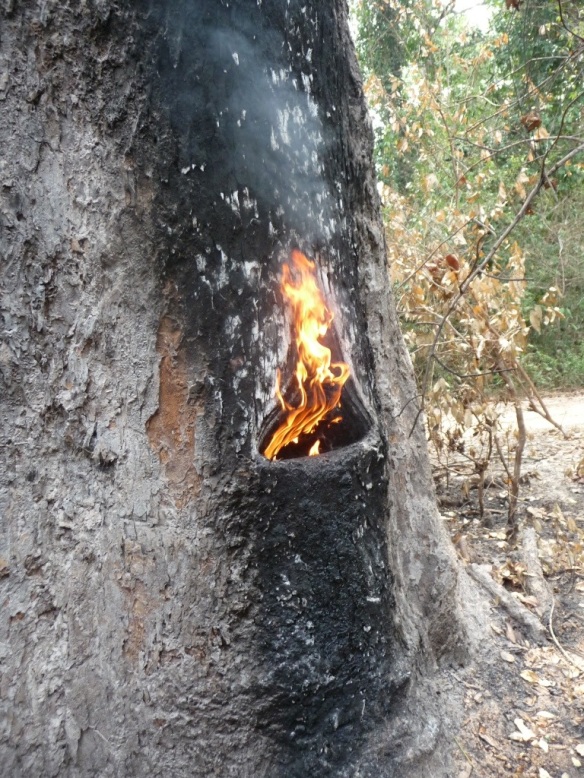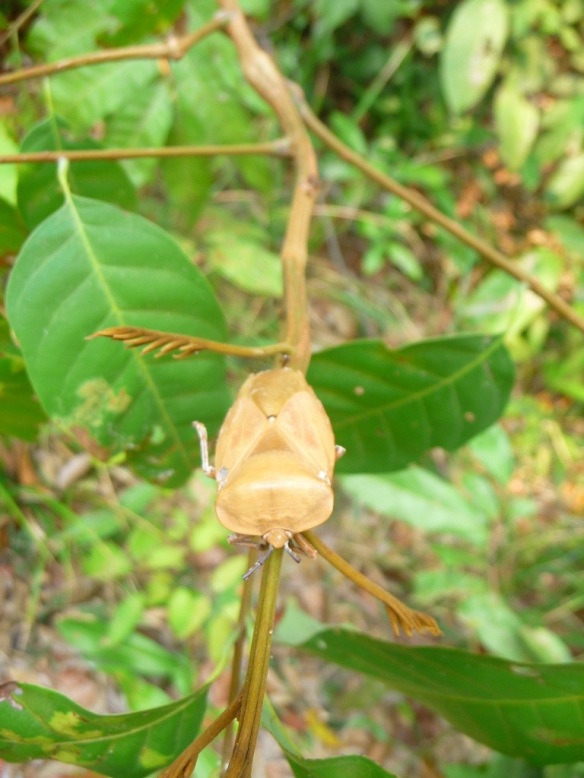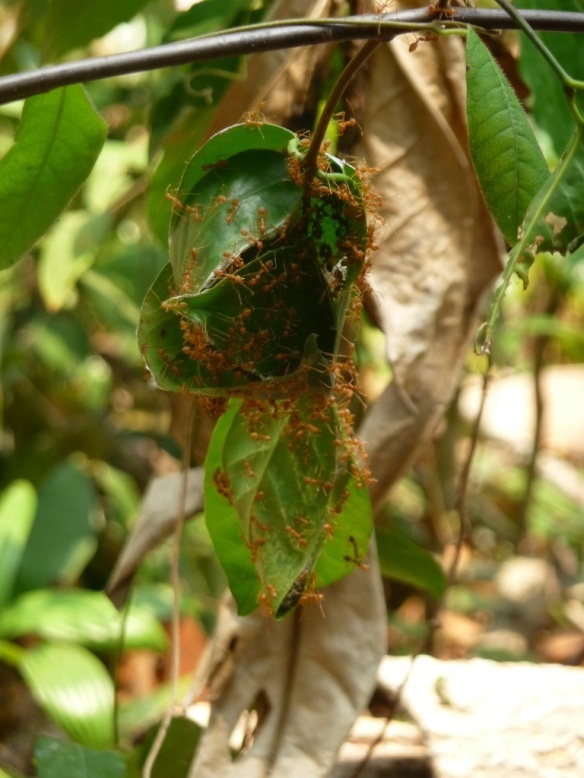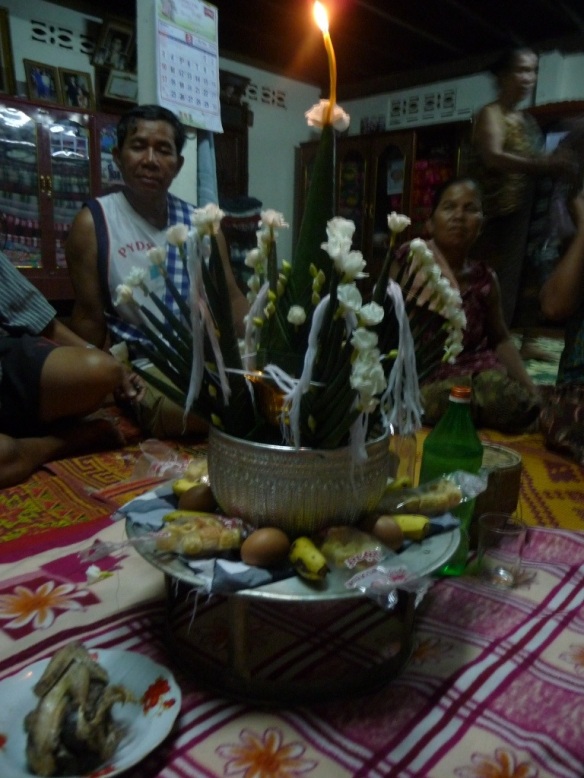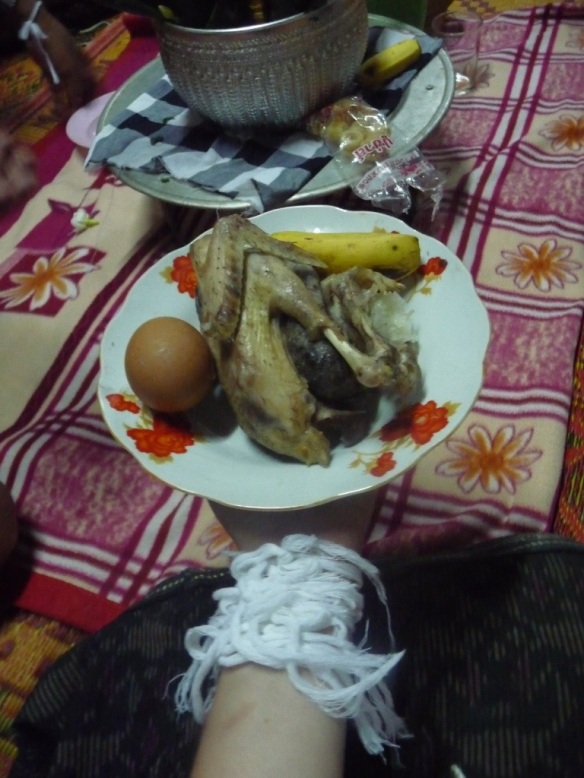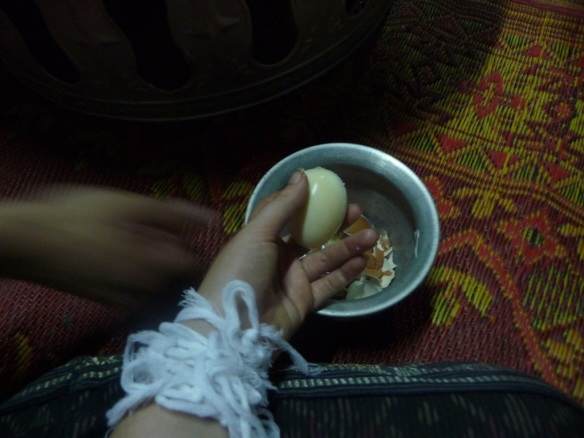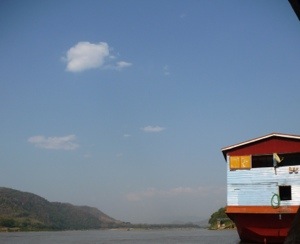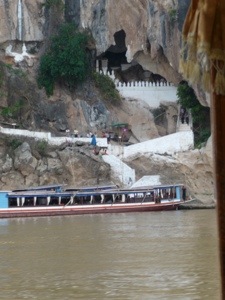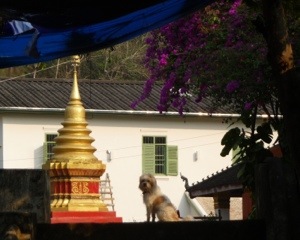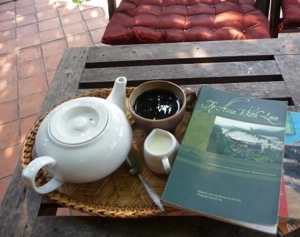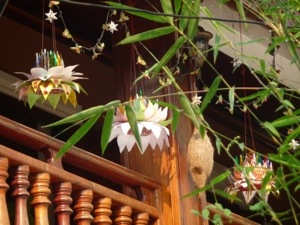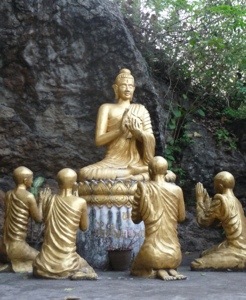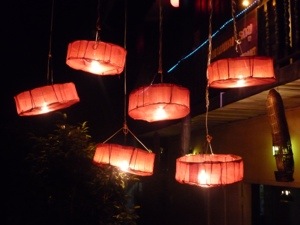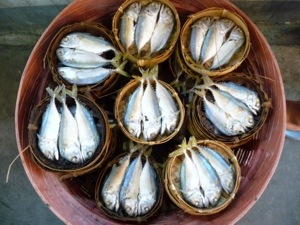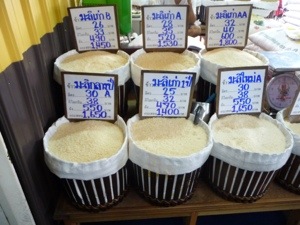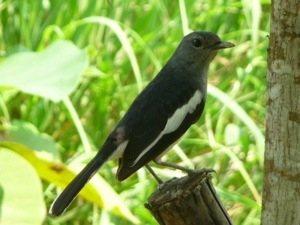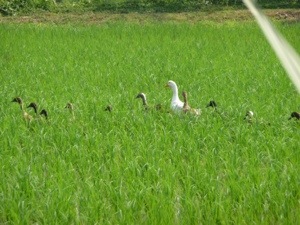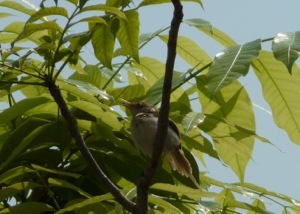The streets of Hoi An bend gracefully toward and away from the river, its Old Quarter a maze of roads too small for cars. Motorbikes, bicycles, and pedestrians vie for space between faded French colonial buildings of an almost-uniform antique yellow. Dominated by tailor’s shops and restaurants, the quarter seems like the world capital of hand-made clothes — and lights. Strung from one side of the street to the next and bursting from tiny store fronts, recently crafted cloth-and-bamboo lanterns disrupt the evening’s cloak with gorgeous abundance.
When we arrive in Hoi An, we’ve been four days traveling, on at least as many modes of transport. We have bartered with a one-eyed boatman under a bridge, drawing numbers in the sand. We have braved a hail storm at the border with passports in hand, eaten bowl after bowl of pho in stolen moments between transport, and weathered the erosive forces of constant movement and the unknown.
Like usual, our lack of planning finds us at a bus station in Hoi An with nothing but the names of two potential hotels scrawled on a piece of scrap paper. We walk. It is forty-five minutes and four hotels later when we find a room off an alley, on an islet, looking out toward Old Town. Spilling out onto the main drag we find it closed to everyone but walkers. Yes!
Later, leaving Mark at dinner, I hurry out into the street to find a birthday candle for my travel companion. Miming “candle” to a street vendor turns out to be a skill more advanced than I could have imagined. Why, oh why did I never play charades? I get as far as incense. Not bad for body language and hell, I can light one on fire for a birthday wish. My vendor drives a hard, impossible bargain, not wanting to sell me only one stick of incense. Understandable, but I need a flame. Overhearing my dilemma, another vendor points me toward the street — ‘candle for the river, 10,000 VND’. Fifty cent candles by the river? Done. We head toward the water.
Then, unexpectedly, at precisely 8:30 pm, for a reason apparent to everyone but us, an air raid siren blares three times and all the lights go out along shore. Throngs of people fill the streets on both sides of the water, buying candles in paper baskets, and descending into wooden boats to set their flames afloat in the river. Thousands of birthday candles, wish candles, good-luck candles float in a stream toward the horizon.
It is Earth Hour, an international hour of darkness started by the World Wildlife Fund to raise awareness for energy conservation. We find ourselves celebrating this moment in a city well-versed at honoring light amidst darkness. While the monthly Full Moon Festival is a practiced occasion, this night is packed, overwhelmed with the new and novel. We came for the Full Moon Festival but we arrived for Earth Hour.
Two nights later the Full Moon festival again dominates the night. Celebrated on the 14th day of each lunar cycle, all electricity is shut off, except for the lanterns forming a net of color overhead. Candle baskets beckon along the shore. In every store front, tables laden with offerings overflow with food, candles, and incense.
